|
Chorale Melodies used in Bach's Vocal Works
Herzliebster Jesu, was hast Du verbrochen |
|
Melody & Text | Use of the CM by Bach | Use of the CM by other composers |
| |
|
Melody & Text: |
|
"Herzliebster Jesu" (often translated into English as "Ah, Holy Jesus", sometimes as "O Dearest Jesus") is a German hymn for Passiontide, written in 1630 by Johann Heermann, in 15 stanzas of 4 lines, first published in Devoti Musica Cordis in Breslau; Hauss- und Hertz-Musica (Leipzig, 1630); and, with a melody by Johann Staden, in the latter’s Hertzens Andachten (1631). As the original headline reveals, it is based on Augustine of Hippo; this means the seventh chapter of the so-called "Meditationes Divi Augustini", presently ascribed to John of Fécamp.
Its tune, also called "Herzliebster Jesu", was written ten years later by Johann Crüger and first appeared in J. Crüger's Neues vollkömmliches Gesangbuch Augsburgischer Confession (Berlin, 1640). The tune has been arranged many times, including settings by J.S. Bach: one of the Neumeister Chorales for organ, BWV 1093, two movements of the St John Passion (BWV 245), and three of the St Matthew Passion (BWV 244).
English translations of the Hymn are noted in the Dictionary of Hymnology, pp. 517, 1648. The most common English translation of this hymn was written by Robert Bridges in 1897 and begins with the first line "Ah, holy Jesus, how has thou offended?" However, several Lutheran hymnals use a translation written in 1863 by Catherine Winkworth which begins "O dearest Jesus, what law hast thou broken?" An alternative translation in modern English from the Choral Niagara website.
Source: Wikipedia (July 28, 2018), with additions by Aryeh Oron (October 2018) |
|
Melody: Zahn 983
Composer: Johann Crüger (Berlin, 1640) |
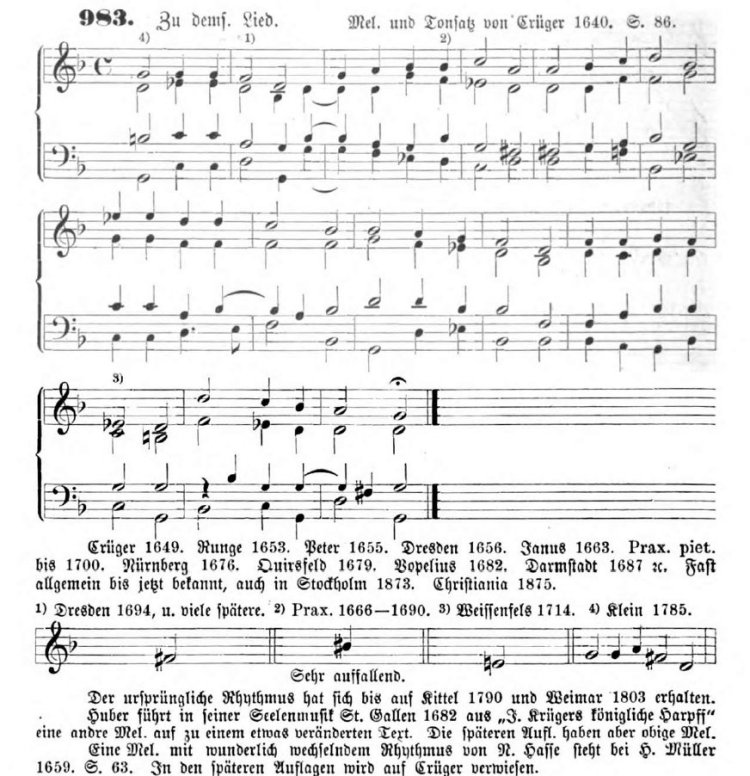 |
|
Text: Herzliebster Jesu, was hast du verbrochen (NLGB 71; EG 81; ELG 158)
Author: Johann Heermann (1630), based on Luke 23: 20-24 |
|
Hymnal versions Bach may have known: |
|
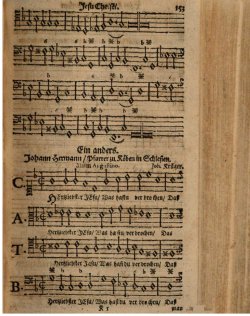
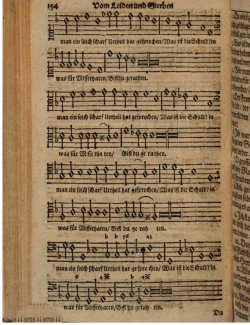
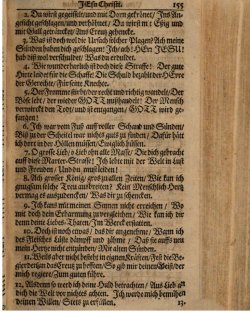
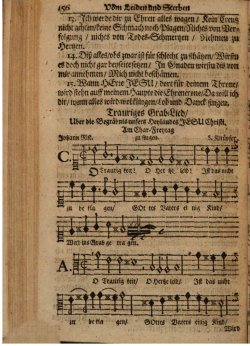
|
|
Melody & text of Herzliebster Jesu (NLGB 71) from the Neu Leipziger Gesangbuch, pp 153-156 |
| |
| |
|
Use of the Chorale Melody by Bach: |
|
Text: |
|
Chorale Herzliebster Jesu (Mvt. 3) from Matthäus-Passion BWV 244 (1727) (verse 1)
Ref: RE 78; Br 78; Birnstiel 85; Fasch p.77 |
|
Form Simple (Flutes, Oboes, Strings, Organ, and Continuo). |
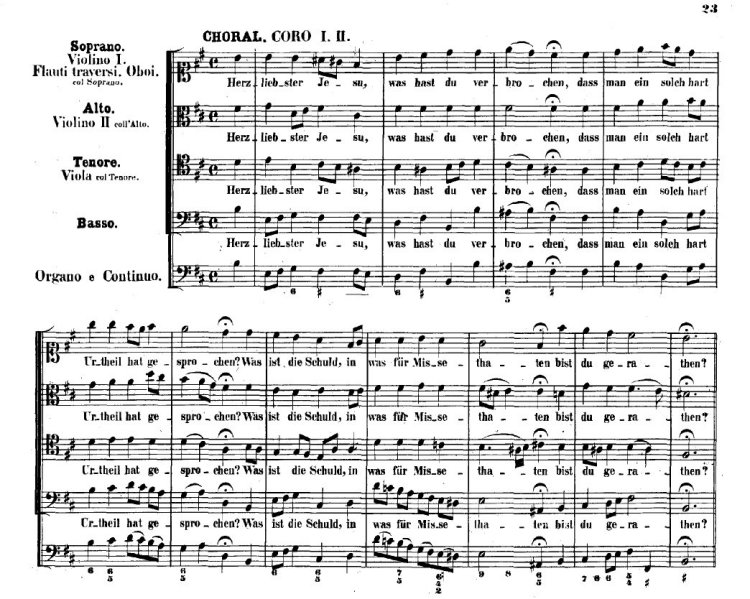 |
|
Recitative for Tenor & Chorus O Schmerz! hier zittert das gequälte Herz (Mvt. 19) from Matthäus-Passion BWV 244 (1727) (interpolation of verse 3) |
|
Form. The Choral (S.A.T.B.) is sung (Strings, Organ, and Continuo) in three detached phrases interrupting the Tenor Recitativo (2 Fl., 2 Ob. da caccia, Organ, and Continuo). |
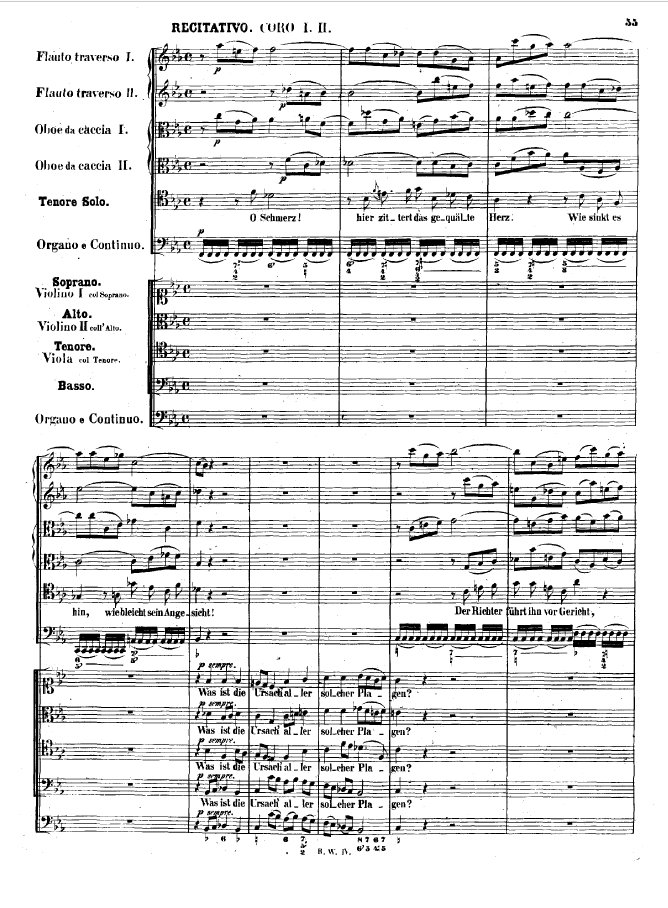
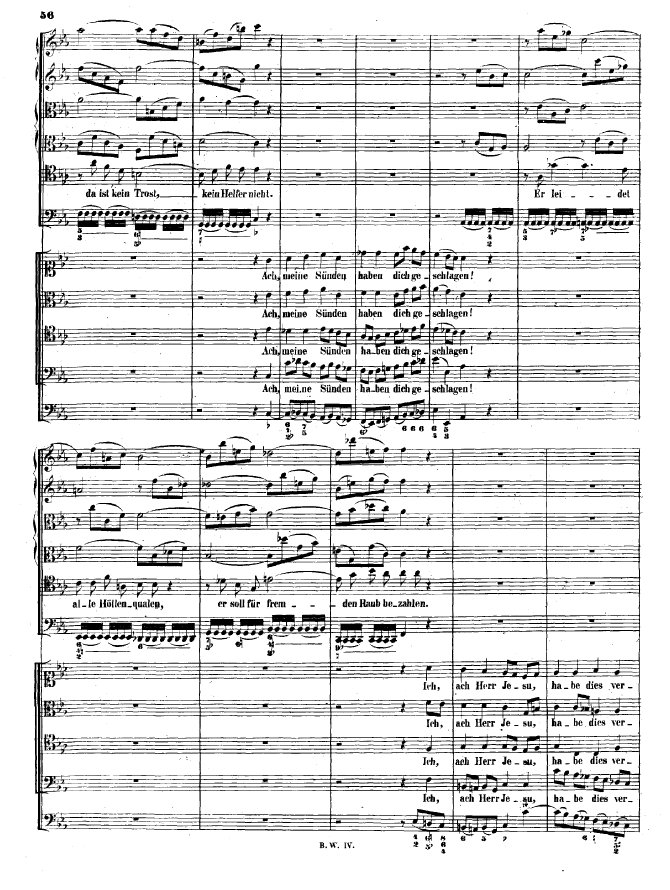 |
|
Chorale Wie wunderbarlich ist doch diese Strafe! (Mvt. 46) from Matthäus-Passion BWV 244 (1727) (verse 4)
Ref: RE 105; Br 105; Birnstiel 109; Fasch p.5 |
|
Form. Simple (2 Fl., 2 Ob., Strings, Organ, and Continuo) |
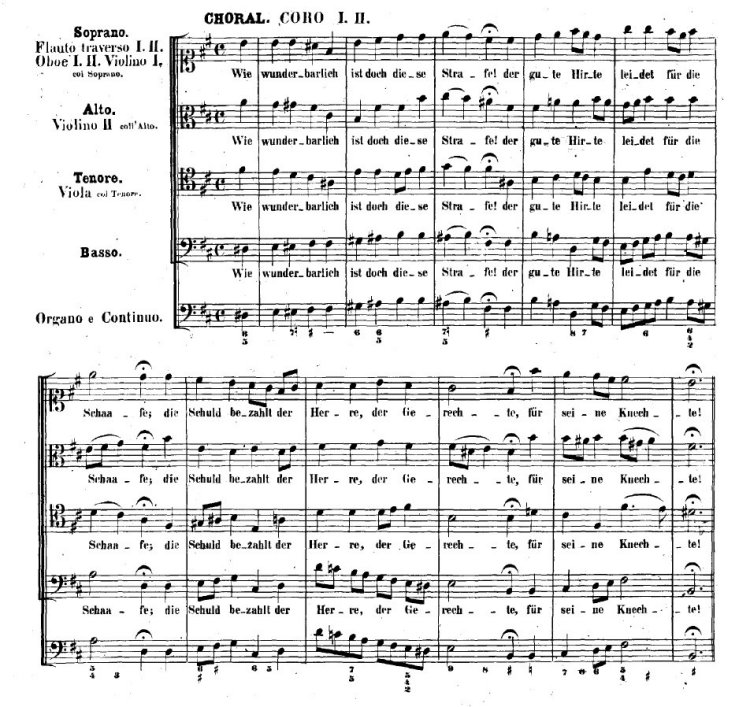 |
|
Chorale O große Lieb, o Lieb ohn alle Maße (Mvt. 3) from Johannes-Passion BWV 245 (1724) (verse 7)
Ref: RE 59 (2nd Version); Br 58 (2nd Version); Birnstiel 62 (2nd Version); Dietel 136 (1st Version); AmB 46II p.139 (1st Version); Levy–Mendelssohn 16; Fasch p.76 (2nd version) |
|
Form. Simple (2 Fl., 2 Ob., Strings, Organ, and Continuo). |
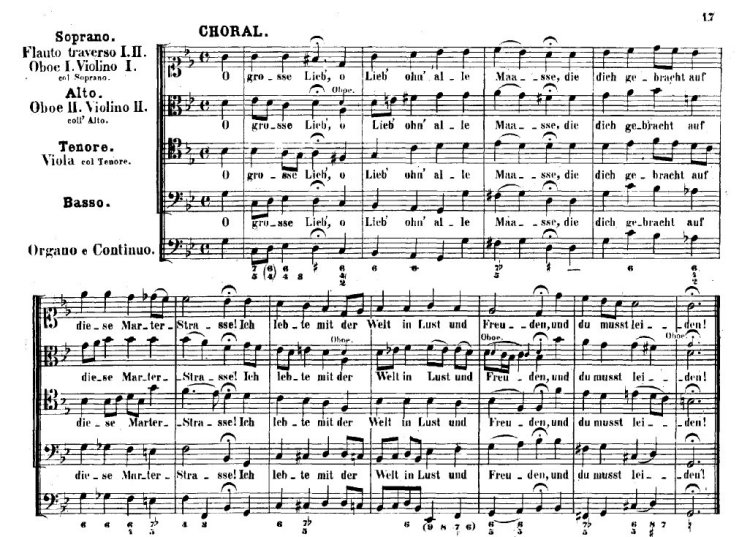 |
|
Chorale Ach großer König, groß zu allen Zeiten (Mvt. 17) from Johannes-Passion BWV 245 (1724) (verses 8-9)
Ref: RE 111; Br 111; Birnstiel 115; Dietel 140; AmB 46II p.327; Fasch p.78 |
|
Form. Simple (2 Fl., 2 Ob., Strings, Organ, and Continuo). |
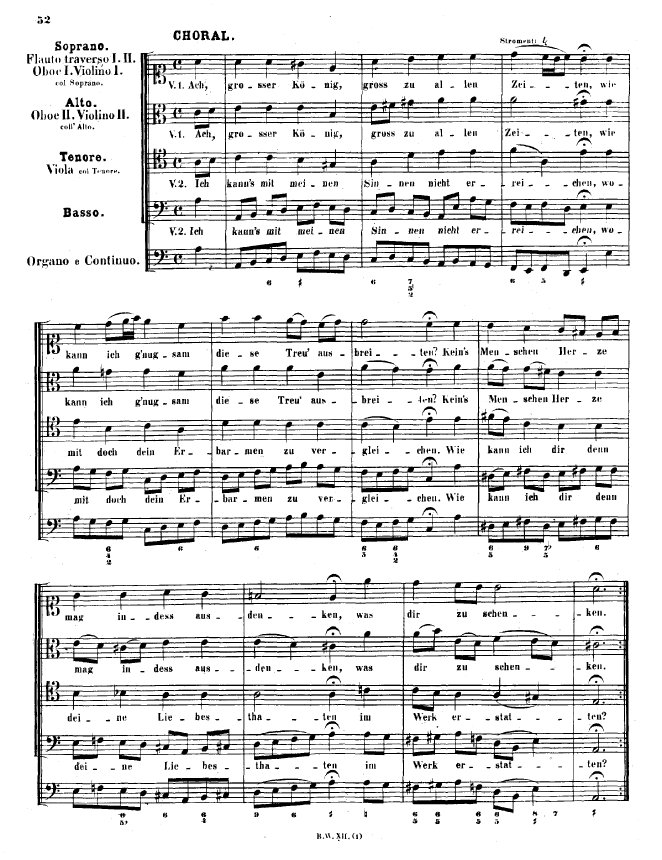 |
|
Untexted: |
|
Chorale Prelude Herzliebster Jesu, was hast du verbrochen, BWV 1093 |
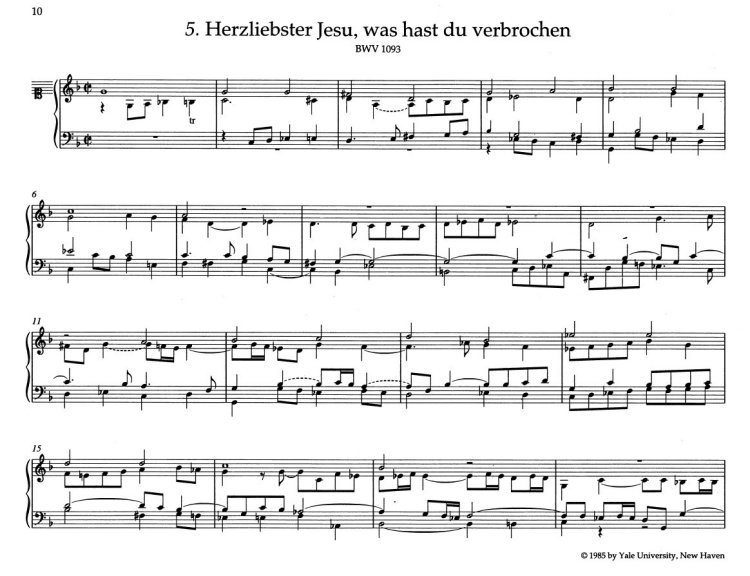
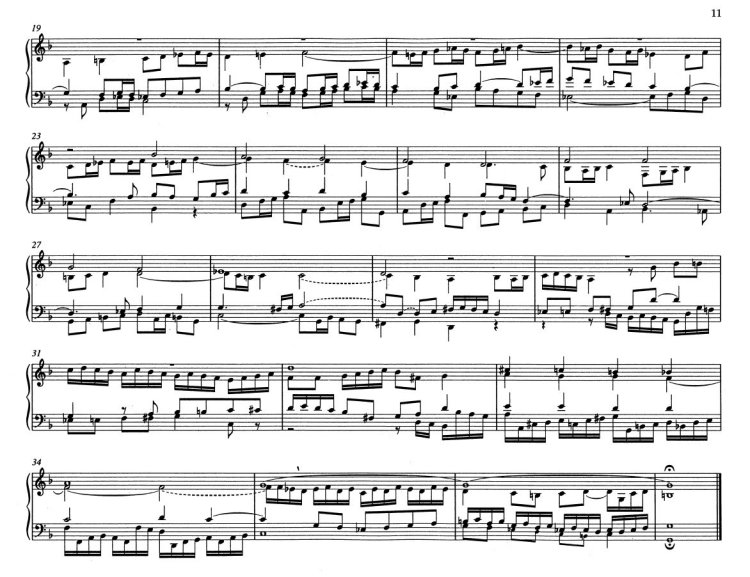 |
| |
| |
|
Use of the Chorale Melody by other composers: |
|
Johannes Brahms used it for one of his Eleven Chorale Preludes for organ, Op. 122: No. 2. Max Reger's Passion, No. 4 from his organ pieces Sieben Stücke, Op. 145 (1915-1916), uses this melody. Mauricio Kagel quoted the hymn, paraphrased as "Herzliebster Johann, was hast du verbrochen", in his oratorio Sankt-Bach-Passion telling J.S. Bach's life, composed for the tricentenary of J.S. Bach's birth in 1985. |
| |
| |
|
Sources: Bach Digital; BGA; Zahn; BCML discussions on BCW; Charles Sanford Terry's Bach Chorals books
Photos from Gottfried Vopelius: Neu Leipziger Gesangbuch (Vopelius 1682) & Christian Friedrich Witt: Psalmodia Sacra, Oder: Andächtige und schöne Gesänge… (Gotha Hymnal, 1715), were taken from digital copies of the books downloaded from Bayerische Staatsbibliothek München. These copies are Out of copyright - non commercial re-use (Europeana Rights).
Prepared by Aryeh Oron (October 2018) |